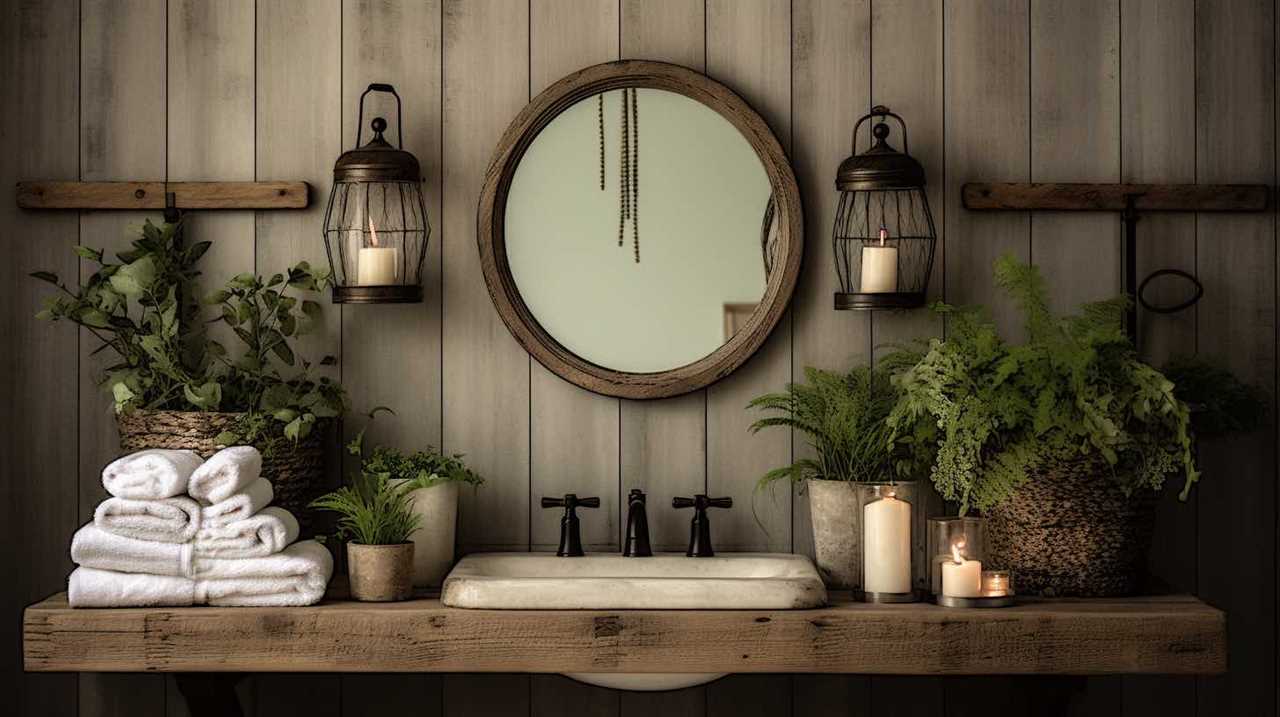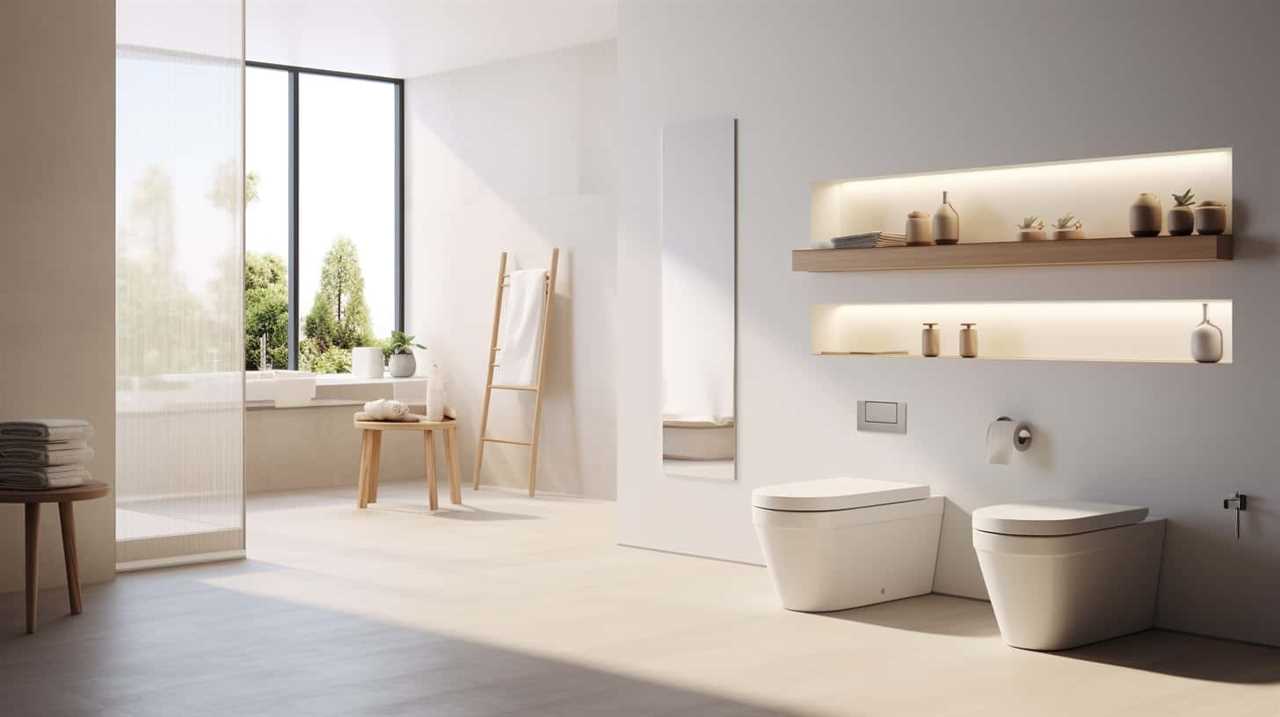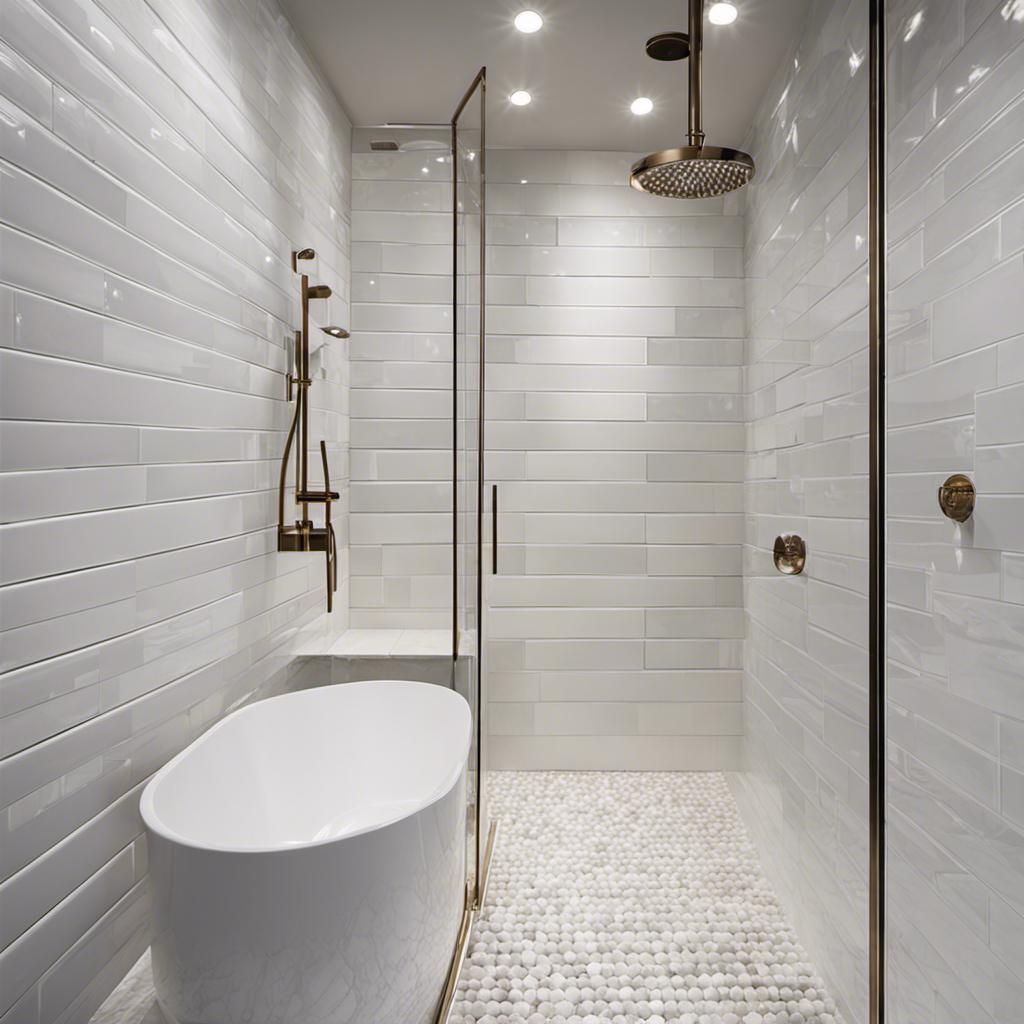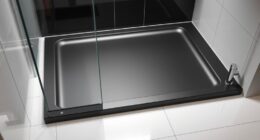We all are curious about the drying time of bathroom sealant. The duration can vary depending on different factors.
In this article, we will explore the different types of bathroom sealant and their drying times. We will also discuss how environmental conditions can impact the drying process.
Additionally, we will provide tips on speeding up the drying time and when it is safe to use the bathroom after applying sealant.
Get ready to master the art of bathroom sealant drying!

Key Takeaways
- The drying time of bathroom sealant is influenced by factors such as humidity, sealant thickness, and evaporation of water.
- Silicone sealant typically takes about 24 hours to dry completely, while acrylic sealant dries faster within 2 to 4 hours.
- Environmental conditions such as humidity and temperature can impact the drying process of bathroom sealant.
- To accelerate the drying process, increase air circulation, use a dehumidifier, apply heat, and ensure a dry and well-ventilated environment.
Factors Affecting Bathroom Sealant Drying Time
Several factors can influence the drying time of bathroom sealant. One significant factor is the impact of humidity on sealant drying. High levels of humidity in the bathroom can prolong the drying process. Moisture in the air slows down the evaporation of water from the sealant, which in turn extends the drying time. On the other hand, low humidity can expedite the drying process.
Another factor that affects drying time is the thickness of the sealant application. Thicker layers take longer to dry compared to thinner ones. This is because a thicker layer of sealant requires more time for the water content to evaporate completely.
Therefore, it’s important to consider the humidity levels and the thickness of the sealant application to estimate the drying time accurately.
Different Types of Bathroom Sealant and Their Drying Times
There are various types of bathroom sealant, and each type has a different drying time. Understanding the drying times of different types of bathroom sealant can help you plan your project and ensure the best results.

Silicone sealant is one of the most common types used in bathrooms. It typically takes about 24 hours to dry completely, but can vary depending on factors such as humidity and temperature.
Acrylic sealant, on the other hand, dries much faster, usually within 2 to 4 hours. However, it isn’t as durable as silicone and may need to be replaced more frequently.
When applying bathroom sealant, it’s important to clean and dry the surface thoroughly, and follow proper application techniques to ensure a strong and long-lasting seal.
How Environmental Conditions Impact Bathroom Sealant Drying
We frequently observe how environmental conditions impact the drying time of bathroom sealant. The effect of humidity on bathroom sealant drying is significant. High humidity levels can slow down the drying process, as moisture in the air prevents the sealant from evaporating properly. On the other hand, low humidity can speed up drying, as it allows the moisture to escape more quickly.

The impact of temperature on bathroom sealant drying is also noteworthy. Higher temperatures can accelerate the drying process, while lower temperatures can slow it down. Additionally, extreme temperatures can affect the overall quality and longevity of the sealant.
Understanding these factors is crucial for achieving optimal results when applying bathroom sealant.
Transition: Now that we understand how environmental conditions impact bathroom sealant drying, let’s explore some tips for accelerating the drying process.
Tips for Accelerating Bathroom Sealant Drying Process
To accelerate the bathroom sealant drying process, we can utilize a few helpful techniques.

One effective method is to increase air circulation in the room by using a fan or opening windows and doors. This allows for quicker evaporation of moisture and speeds up the drying time.
Additionally, using a dehumidifier can help remove excess moisture from the air, further facilitating the drying process.
Another tip is to apply heat to the sealant using a hairdryer or heat gun. The warmth promotes faster drying by increasing the rate of evaporation. It’s important to note that when using heat, caution must be exercised to avoid overheating and damaging the sealant.
When Is It Safe to Use the Bathroom After Applying Sealant?
After applying sealant in the bathroom, it’s important to wait for it to fully dry before using the bathroom again. By doing so, you can ensure that the sealant has properly cured and is ready for use. As a general rule, it’s recommended to wait at least 24 to 48 hours before using the bathroom after applying sealant. However, the exact drying time may vary depending on factors such as the type of sealant used, temperature, humidity, and ventilation in the bathroom.

To ensure safety and avoid any damage to the sealant, it’s important to follow these safety precautions:
- Avoid touching or disturbing the sealant during the drying process.
- Keep the bathroom well-ventilated to aid in the drying process.
- Avoid using any harsh cleaning products on the freshly sealed areas.
- Regularly inspect the sealant for any signs of damage or wear.
Common mistakes to avoid when using the bathroom after applying sealant include:
- Rushing to use the bathroom before the sealant has fully dried.
- Using abrasive cleaning products that can damage the sealant.
- Neglecting proper ventilation, which can prolong the drying time.
- Failing to regularly inspect and maintain the sealant.
Frequently Asked Questions
What Is the Recommended Drying Time for Bathroom Sealant?
The recommended drying time for bathroom sealant depends on several factors. These factors include the type of sealant used, humidity levels, and temperature. It is important to follow the manufacturer’s instructions for optimal results.
Can I Use a Hairdryer or a Fan to Speed up the Drying Process?
Using a hairdryer or fan to speed up drying bathroom sealant is possible. Pros include faster drying time, while cons include potential uneven drying and damage to the sealant.

Can I Apply a Second Coat of Sealant Before the First One Is Completely Dry?
We don’t want to rush things, so let’s wait for the first coat to dry completely before applying a second one. It’s important to give the sealant enough time to dry for optimal results.
How Long Should I Wait Before Cleaning My Newly Sealed Bathroom Fixtures?
We should wait at least 24 hours before cleaning our newly sealed bathroom fixtures to ensure that the sealant has fully dried and cured. This will help maintain the integrity of the seal and prevent damage to the fixtures.
Is There a Difference in Drying Time Between Silicone-Based and Acrylic-Based Bathroom Sealants?
There is a difference in performance between silicone-based and acrylic-based bathroom sealants. Silicone-based sealants have better durability and flexibility, while acrylic-based sealants dry faster and are easier to clean up.
Conclusion
In conclusion, the drying time of bathroom sealant can vary depending on various factors such as the type of sealant used, environmental conditions, and proper application techniques. It’s important to consider these factors to ensure the sealant dries effectively.

Remember, patience is a virtue when it comes to bathroom sealant drying. So, don’t rush and give it the time it needs to fully dry and provide a watertight seal. After all, good things come to those who wait.










